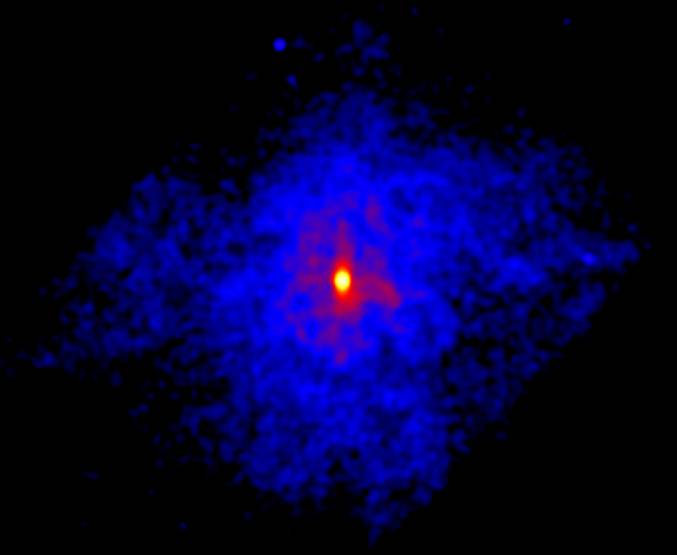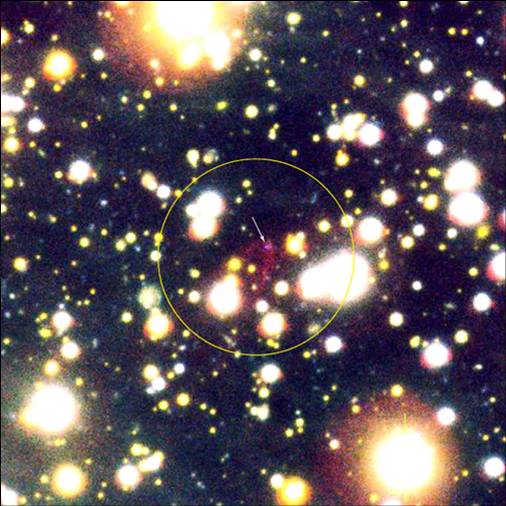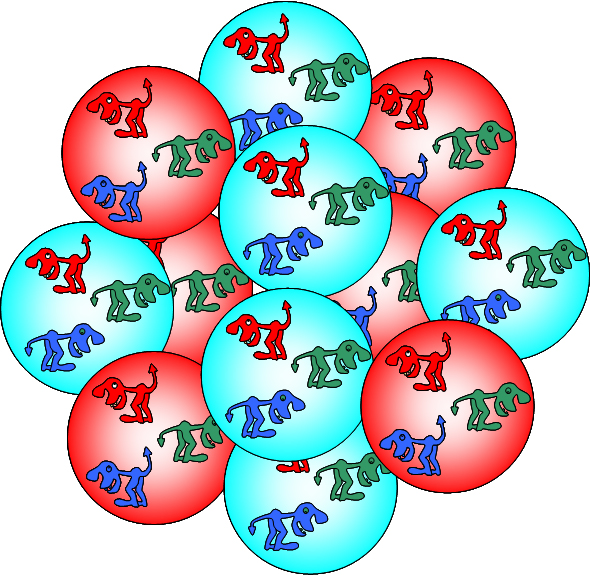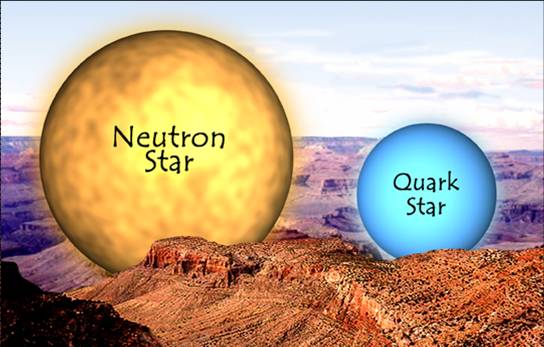

Chandra X-ray observation of RX J1856.5-3754 (or the C58 pulsar),
the remnants of a supernova noted on Earth in AD 1181, reveal that the neutron
star in the core has a temperature much lower than expected. This suggests
that a new state of nuclear matter might exist inside the star.
Credits:NASA/CXC/CfA/P.Slane et al.
http://chandra.harvard.edu/photo/2002/0211/index.html

RX J1856 in Optical Light
This optical image of RX J1856.5-3754 portrays a crowded region of star
formation. In comparison, the Chandra X-ray image shows that RX J1856
outshines all of the other sources in the field, indicating it is both
extremely hot and very small.
Credit: European Southern Observatory Very Large Telescope
The neutron ball is similar to a giant atomic nucleus with Z=1057. With such a big compression, neutrons start to "crowd-up", following the Pauli's rule, which does not allow them to be in the same quantum state. It is energetically useful to replace some neutrons with protons, or even by isolated quarks. It seems (A.R. Bodmer 1971 , E. Witten 1984) that the state of the matter with a lowest possible energy level is a mixture of the "normal" u and d quarks with strange quarks s. It is solely the big mass of the s quark (30 times more than that of u) which protects us from falling the nucleus of 58Fe, for example, to a quark state.
Strange quark droplets are a possible form of hadronic matter, containing approximately equal (and potentially very large) numbers of up, down, and strange quarks inside a single hadronic bag.




Confined quarks

Free quarks
Left: 12C nucleus. Right: a strange matter droplet with A=12.
The Grand Canyon is 30 km wide. A neutron star is about 20 km in diameter, and a quark star is about 12 km in diameter.

Illustration: CXC/D. Berry
Astronomers still discuss if a real black hole has been discovered.
Sign-down these numbers and check from time to time on internet, if they
are really BLACK:
X-ray transient XTE J1650-500
SS433 MilkyWay Star
Cygnus X1 and HDE 226868
Seyfert-1 galaxy NGC 4593
Seyfert galaxy MCG -6-30-15
Galaxy NGC 4486
See also: http://blackholes.stardate.org/